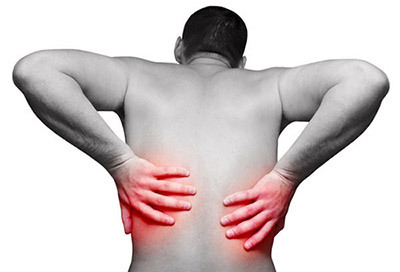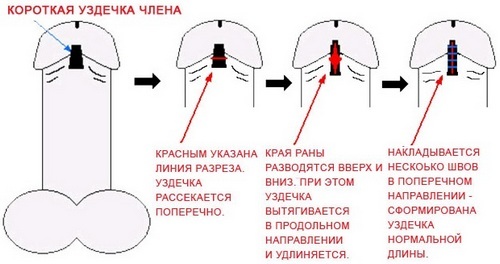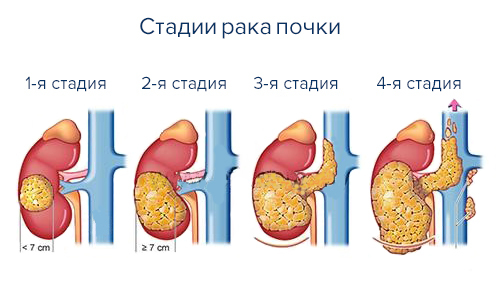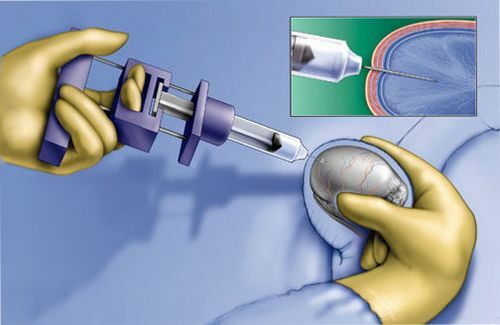The main signs of kidney disease in men
Diseases of this important paired organ in men and women have the same stages of development, but at different frequencies: one is more susceptible to men, and the other is to women. This is due to the anatomical features of the structure of the urinary system of representatives of each of the sexes. So, it is established that men have fewer pyelonephritis, kidney lowering, but more often stones are formed inside lohan cells of the bean-shaped organ.
Content
- 1 avilable system urinary
- 2 syndromes of kidney disease in men
- 2.1 Pain
- 2.2 Urinary Syndrome
- 2.3 Intoxication syndrome
- 2.4 Hypertensive syndrome
- 2.5 edema syndrome
- 2.6 Cardiac manifestations
- 2.7 Neurologic manifestations
- 3 Treatment
- 4 Features of a diet for kidney diseases in men
Features of the structure of the urinary system
The canal of urination is a urethra,rank longer than women. Therefore, the ascending path of infection( by urinary tract) is uncharacteristic for them, most often the process is limited to urethritis. Move to the bladder cavity painful microflora, as a rule, fails, which explains the more rare cases of inflammation of this organ among the male part of the population. For the same reason, men have rare pyelonephritis, and, in general, they are caused by the presence of urolithiasis, which, on the contrary, is more common in men.

Male urethra( urethra).
Also, the male and female urinary system is characterized by the fact that in men this path is integrated with the reproductive system, and in women - separately from that.
Given the specific physiological location of the organs of the urinary system, the main diseases of the kidneys, which are more typical of men are:
- urolithiasis;
- chronic renal failure;
- kidney cancer;
- kidney tuberculosis.
All of them are considered in more detail in the corresponding articles, and this text is intended to tell about the most typical symptoms of kidney diseases in men and signs on which it is possible to suspect kidney diseases.
Syndromes of kidney disease in men
As the disease progresses, some signs appear earlier, others - later. It depends on the individual characteristics of the patient's body, the reasons for the disease, and its specifics. If you group the symptoms of renal disease in men - such groups of symptoms are called syndromes - you can see the following picture:
Pain syndrome
Renal colic , caused by urolithiasis, is characterized by very severe pain, spasms, a prevalence on the suprapubic region, genitals, hips. The condition is caused by the movement of the stone in the kidneys and by the movement of the stone along the ureter. In the future, moving along the sections of the urethra, the stone will also change the localization of pain - which is also characteristic of renal colic. Attention and accompanying signs attract attention: nausea, vomiting, increase in the level of arterial pressure( due to compression of the kidney by the stone), the presence of sand or the admixture of blood in the urine.

Kidney disease can show pain only at a late stage of the disease.
Pain with glomerulonephritis appears infrequently, usually no longer later stages of development. She is fickle, aching, grabs both sides of the waist.
Pain in renal failure occurs only in the last stages of the disease and, rather, is a manifestation of complications: pericarditis, myositis, etc. Accordingly, the localization of pain may be different.
The pain syndrome in kidney cancer is usually unilateral, the pain is dull, aching, but can also mimic renal colic. In later stages it becomes a dominant symptom. An excruciating sensation causes even a loss of consciousness, so the patient needs to be anesthetized according to the scheme, systematically, as the attack does not pass by himself.
Urinary syndrome
Characterized by a change in the amount of urine or its laboratory parameters.

In renal pathologies, the amount of urine released( decreases or increases) and such parameters as the number of leukocytes, red blood cells, protein, the presence of blood and purulent discharge in the urine.
In chronic renal failure of the initial stages, the volume of urine increases to 2.5 liters per day. When the disease passes into a difficult stage, the development and excretion of urine, cease completely.
With the progression of the calculus in the urinary system, the urinary excretion may increase or vice versa, completely stop, due to the blocking of the stones by the stones. In the urine there are white blood cells and red blood cells, protein.
In acute glomerulonephritis , the patient's urine volume is reduced to 400 ml per day for the first 5 days from the onset of the disease. Then diuresis increases, but the density of urine decreases( this can be determined by the laboratory method).The intensity of the color of urine varies - from a slight, pink hue to a saturated, almost brown pigment. Characteristic of the appearance of protein in the urine in men.
In the development of cystic neoplasms , polyuria develops - an increase in the volume of 24-hour urine to 4 liters: it is light, of low density, released mainly at night.
In the urine of a patient with a malignant neoplasm of the kidneys, there is blood, if the lumen of the ureter is clogged by a blood clot, the urinary outflow completely ceases.
Intoxication syndrome
It is caused by a violation of the main function of the kidneys - the removal of toxic substances dissolved in the blood from the body. Other causes of intoxication may be the proliferation of microbes in the urinary tract or the disintegration of a cancerous tumor.
In chronic renal failure develops a pronounced weakness, increased fatigue, desire and need to be only in a horizontal position. Because of the accumulation in the blood of the products of the decomposition of nitrogen metabolism, the patient experiences nausea, vomiting, lack of appetite, the skin becomes waxy in color, an unpleasant aftertaste appears in the mouth.
With pyelonephritis , the body temperature rises against a background of chills. As the disease develops, nausea, lack of appetite, weakness, coldness of the hands and feet, pallor of the skin.
Polycystic kidney is manifested by increased fatigue, dry mouth, urge to vomit.
In malignant neoplasm of the kidneys , the patient lacks appetite, it is pale, weak, the skin acquires a characteristic waxy shade, facial features are sharpened due to weight loss, body temperature is increased.
Hypertonic syndrome
Increased blood pressure( BP) is part of the so-called triad of symptoms in the diagnosis of glomerulonephritis . Polycystic kidney disease and malignant neoplasm also always appear as an increase in this vital indicator. The movement of sand and stones along the urinary tract during urolithiasis causes not only an increase in the level of blood pressure, but also a hypertensive crisis( a critical increase in pressure).
Edema
Edema in kidney disease, as a rule, are located on the face and are noticeable, but it is possible and the presence of hidden swelling - for example, becomes a narrow wedding ring.

In case of kidney disease, visible and concealed swelling may occur.
Specific symptoms of kidney cancer in men include the development of varicocele - varicose veins of the spermatic cord.
Cardiac manifestations of
In chronic renal failure, as a complication, cardiac muscle dystrophy, circulatory insufficiency arises, resulting in stagnation of blood in the lungs. There are pains behind the sternum, a violation of the heart rhythm, shortness of breath, a feeling of lack of air, coughing with the separation of pink, foamy sputum.
Neurological manifestations of
With each kidney disease, there is a violation of sleep, irritability, mood deterioration. In pathologies where irreversible processes( kidney cancer, chronic renal insufficiency) occur, suicidal tendencies can be traced.
Treatment of
Elimination of all listed diseases begins with compliance with bed rest, amendments to food.
- The doctor sets the acceptable salt intake rate, determines how much water should be drunk daily for a particular patient.
- Restriction of motor activity is necessary not only to reduce the degree of manifestation of the pain syndrome, but also to prevent hypothermia, unhindered overcoming the state of weakness, intoxication.
- If the disease is caused by pathogens and an inflammatory process occurs, the specialist will prescribe antibiotics
- When a calculus is formed inside the kidneys, the urologist will recommend drugs dissolving the deposit;Will prescribe painkillers and antispasmodics.
- In chronic renal failure, hemodialysis( "artificial kidney") is necessary, transplantation of a healthy organ is indicated.
Read more: on how to keep the kidneys healthy.
Features of the diet in kidney disease in men
- General principles of nutrition for all kidney diseases - exclude sharp, acidic and salty foods, as well as alcoholic and carbonated drinks.
- In order not to overload the digestive tract and not increase the burden on the kidneys, forcing them to function at an accelerated pace, you need to eat a fraction - at least 6 times a day. Daily use of water should not exceed 1 liter.
- In malignant neoplasms, nutrition is recommended for the replacement of hemoglobin lost in the urine - grenades, beef liver, buckwheat, apples, spinach. Meat and poultry dishes should be baked or boiled. But broths - meat, fish - need to be excluded, especially strong ones. You can not drink coffee, strong tea.
- With stones inside the kidneys, products containing substances whose metabolism has been disturbed are excluded and served as a stone formation. With oxalates and phosphates, do not eat dairy products, poultry, refined carbohydrates, with urates in the diet include foods saturated with vitamin B.
- In inflammatory processes inside the kidneys it is recommended to use more cereals, vegetables( including soups), fruits(Except for citrus fruits).It is acceptable to include in the meat ration of low-fat varieties, oatmeal, honey, jam. It is forbidden to eat onions, garlic, mushrooms, river fish, custard coffee, sweets, which contain cocoa.
The diet should be followed in conjunction with the restriction of motor activity and compliance with bed rest.
Recommended for viewing:



